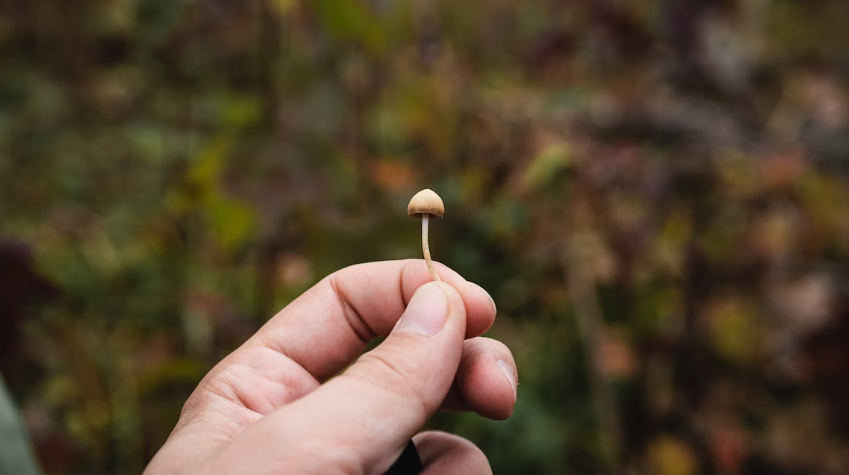Growing Mushrooms at Home: How to Make and Use B+ Cubensis Spores
Mushroom cultivation with B+ cubensis spores is a fascinating hobby that has gained popularity in recent years. With a little bit of knowledge and effort, anyone can grow mushrooms at home. One of the essential tools for successful mushroom cultivation is a spore print. Spore prints are an easy and inexpensive way to grow mushrooms at home. In this blog post, we will discuss how to make and use b+ cubensis spores prints for better mushroom cultivation.
Introduction
Before we delve into the nitty-gritty of spore prints, let’s first understand what they are and why they are important. Mature mushrooms drop spores from their gills.
These Amazonian cubensis spores can be collected onto a piece of paper or foil, resulting in a spore print. These spores can then be used to grow new mushrooms.
Amazonian mushroom spore prints are essential for mushroom cultivation. They enable growers to choose superior genetics for their mushroom strains. By choosing the strongest and most resilient spores, growers can increase the yield and quality of their mushrooms.
Materials Needed For B+ Cubensis Spores
To make a spore print, you will need the following materials:
- Mature Cubensis mushrooms
- Clean, sterile foil or paper
- Glass or cup
- Water spray bottle
- Clean surface for working
It’s important to note that the quality of your spore print will be directly related to the quality of your materials. Be sure to select high-quality materials to ensure the best possible results.
How to Make a Spore Print
Now that you have your materials, it’s time to make your spore print. Follow these steps:
- Choose a mature mushroom. The mushroom should be fully mature with a cap that has opened up to expose the gills.
- Cut off the stem of the mushroom, leaving only the cap.
- Place the cap, gill-side down, onto a clean, sterile piece of foil or paper.
- Cover the cap with a glass or cup to keep it from drying out.
- Wait for several hours or overnight. During this time, the mushroom will drop its spores onto the paper or foil.
- Remove the glass or cup and carefully lift the mushroom cap. You should now see a beautiful spore print on the paper or foil.
- Spray the spore print lightly with water to help keep it from drying out.
Storing Spore Prints
Now that you have your mushroom spores print, it’s important to store it properly. Follow these tips for storing your spore prints long-term:
- Place your spore print in a clean, sterile container, such as a plastic bag or glass jar.
- Label your container with the strain name, date, and any other important information.
- Store your spore print in a cool, dark place, such as a refrigerator or freezer. Spore prints can last for several years if stored properly.
- Bring your spore print to room temperature.
- Allow it to fully thaw if it has been frozen.
- Before using your spore print, make sure that both of these steps have been completed.
Using Spore Prints for Mushroom Cultivation
Now that you have your spore print and have stored it properly, it’s time to use it to grow mushrooms. Follow these steps:
Choose your substrate: The substrate is the material on which the mushrooms will grow. Common substrates include straw, sawdust, and coffee grounds.
Sterilize your substrate: To prevent contamination, it’s important to sterilize your substrate before inoculating it with spores. You can sterilize your substrate using a pressure cooker, autoclave, or other sterilization methods.
Inoculate your substrate with spores. This process adds spores to the substrate.
This allows them to grow into mycelium. Eventually, the mycelium will produce mushrooms. There are a few different ways to inoculate your substrate, including:
- Spore syringe: A spore syringe is a needle filled with spores that can be injected into the substrate. This method is simple and effective but can be expensive.
- Liquid culture: Liquid culture is a solution of spores that can be added to the substrate. This method is more cost-effective than a spore syringe and allows for more precise inoculation.
- Agar plates: Agar plates are Petri dishes filled with agar, a nutrient-rich substance that encourages the growth of mycelium. Spores can be added to the agar plates and allowed to grow before being transferred to the substrate.
Incubate your substrate: After inoculating your substrate, it’s important to incubate it in a warm, dark place. The ideal temperature for incubation is around 70-75°F. The mycelium will grow and spread throughout the substrate during this time.
Prepare your fruiting chamber: Once your substrate is fully colonized with mycelium, it’s time to prepare your fruiting chamber. This is the place where your mushrooms will grow. Common fruiting chambers include plastic tubs or bags. These can be filled with a substrate and covered with a lid or plastic wrap.
Fruiting your mushrooms: Once your fruiting chamber is prepared, it’s time to fruit your mushrooms. This process involves exposing the substrate to fresh air and humidity, which will encourage the mushrooms to grow. Be sure to maintain proper temperature and humidity levels during this time.
Benefits of Cubensis Mushrooms
Now that you have learned how to cultivate them let’s go over their health benefits.
Cubensis Cubensis mushrooms, also known as mushrooms, have been used for centuries for their psychoactive properties. However, recent research has also uncovered potential health benefits of cubensis. Here are some potential health benefits of consuming Cubensis mushrooms:
Improve mental health: Cubensis has been shown to have antidepressant and anxiolytic effects and may be useful in treating conditions such as depression, anxiety, and PTSD. It has also been shown to have the potential for addiction treatment.
Enhance creativity and cognitive function: Some users report increased creativity, improved problem-solving abilities, and enhanced cognitive function after consuming cubensis.
Spiritual and mystical effects: Many users of cubensis report having profound spiritual or mystical experiences that can have lasting positive effects on their well-being and outlook on life.
Neuroprotective effects: Some research suggests that cubensis may have neuroprotective effects and may be useful in treating neurodegenerative diseases such as Alzheimer’s.
Wrapping Up…
Congratulations! You have successfully learned how to make and use Cubensis spore prints for better mushroom cultivation. With a little bit of knowledge and effort, anyone can grow cubensis mushrooms at home.
Remember to select high-quality materials, store your spore prints properly, and maintain proper temperature and humidity levels during the growing process. Good luck, and happy growing up!









